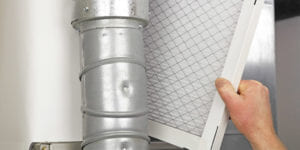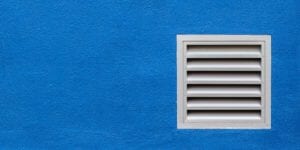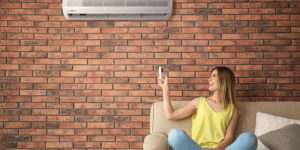Best Heat Pumps
Heat pumps offer a cost-effective alternative to the standard central air system. Instead of relying on an outside compressor component and an inside furnace component, a heat pump combines both functions into one unit.
Heat pumps work by transferring heat from one location to another. In the summertime, these units will pump warm air indoors back out. In the winter, these units will force heat into the home. Heat pumps still have compressors, heating elements, and in some cases, furnaces.
This article reviews the different ratings, features, and specifications needed in the best heat pump. We’ll also be talking about what you need to know before committing to a heat pump, as well as when a heat pump is more valuable to the homeowner than the central AC unit.
- Variable speed compressor offers better control over power and efficiency
- WeatherGuard fasteners allow this pump to work in all types of weathers and climates
- Premium build quality and stark, unassuming design
- Comes with a 12-year compressor and 10-year parts warranty
- SmartShift technology offers a unique and proactive way to defrost the heat pump
- High-efficiency scroll compressor enables the full strength of a single-stage pump
- Great dehumidification for the price
- Includes a 10-year Limited Warranty
- Variable speed operation means you can run this pump between 40-100% capacity
- Operation remains quiet at under 58 decibels
- High BTU rating and efficiency in one of the smallest footprints on our list
- Comes with a 10-year compressor and parts warranty
- Scroll compressor allows for more efficient operation of the two-phase design
- Protective panels and finish are well-equipped for most weather types
- High-quality dehumidifier makes rooms comfortable even in high humidity
- Includes a 12-year all parts warranty
- Utilizes a corrosion-resistant steel tubular heat generator
- Scroll compressor is best for single-phase design
- Enhances air control with multi-speed blower
- Comes with a 10-year limited parts warranty

Trane pushes for power and speed over many other features, and with this heat pump, they seem to have met their own metrics.
The Trane XV20i heat pump, not to be confused with the Trane XV20i AC unit, is Trane’s premiere heat pump offering. The unit boasts an impressive 60,000 BTU for excellent cooling potential, up to 10 HSPF of heating potential, and up to 20 SEER efficiency thanks to the variable speed motor.
This Trane product excels as fast cooling and overall performance, quickly making it one of the best products for any climate. The higher price tag, associated installation fees, and large size though does make it a tough sell for some. Still, this Trane unit should have no problems working with your central air system and providing the cool (and heat) that you need regardless of where you live.
Pros
- Highly reliable
- Excellent efficiency
- Premium build quality
- Provides great savings in energy
Cons
- Expensive
- Somewhat tricky installation
- Large, bulky unit

Goodman remains a company hailed for good value overall in both its AC units and its heat pumps. The Goodman R410A heat pump is one of the most affordable heat pumps currently being sold. Those unfamiliar with heat pumps or even those skeptical of their value may be hard-pressed to pass up on the deals regularly associated with this product.
With a 14 SEER efficiency rating, we have to admit we’re a little disappointed with the energy loss. However, 9 HSPF is nothing to scoff at when it comes to this price point, which makes up for frustrations in the AC department.
Generally speaking, you get what you pay for with this Goodman product. Loud operation and lackluster cooling may be included, but when you take into account the strength of this unit in comparison to its price tag, there is no denying that this heat pump is one of the greatest values available.
Pros
- Affordable
- Small size
- Easily installed comparatively
- Excellent warranty coverage
- Good dehumidifier
Cons
- Not very efficient
- Low BTU capacity
- Can be loud

Carrier produces products that seem to rival Trane, boasting similar specifications and functionality, but in a smaller package.
The Carrier Infinity 20 Heat Pump is a powerful heat pump with a specific focus on heating capability. With 13 HSPF, we have to stress that you would be hard pressed to find any comparable unit that can heat quite like this one.
The cooling capacity is nothing to laugh at either, and considering the small frame, we’re very impressed that the unit operates at up to a 20.5 SEER efficiency rating and still manages to keep relatively quiet.
Unfortunately, this unit is quite expensive, and even several orders more expensive than the most affordable heat pump on our list. Because of this, we recommend this heat pump to owners that would specifically benefit from it—namely those in colder climates—as opposed to those who would prefer a more rounded unit.
Pros
- Excellent heating capacity
- Great BTU rating
- Small & unassuming frame
- High efficiency
Cons
- Expensive
- Somewhat slow operation
Maytag, like Trane, seems to focus on the exceptional build quality of their units. The Maytag M120 combines a two-phase operation with a high HSPF rating to be one of the best heat pumps for coastal and humid climates. Excellent dehumidification capabilities and premium parts are all housed in a unit that looks and feels built to last.
Considering the two-phase operation, however, we do find it strange that the SEER rating seems more comparable to a single phase design. Likewise, heating is poor not only for this unit’s class but for heat pumps in general.
That’s why we recommend this Maytag product or those who live near the coasts. In many ways, it functions as a great contrast to the Carrier’s focus on heat and helps homeowners tailor the focus of their heat pumps rather than spending more on an all-in-one unit.
Pros
- Excellent dehumidification
- High BTU rating
- Premium build quality
- Consistent output
Cons
- Weak heating capability
- Low comparative SEER rating
Our final heat pump offers the highest overall BTU rating–but certainly reflects its brute force in its cost.
The Direct Comfort 3 Ton and 80,000 BTU heat pump comes with many unique features and offering exclusive to Direct Comfort. For instance, the company boasts consistently about their focus on smart settings and more efficient controls.
When properly installed to a compatible thermostat, this heat pump can be controlled from anywhere in the home from a host of smart devices.
Moreover, this product offers strong offerings for those who need raw power and have massive or commercial spaces to fill. The heating capability (HSPF) is a bit lower than we’d appreciate, but for summer months, this product is nothing short of perfect for most applications.
It commands a price several times higher than some of our other choices here as well, so buyer beware–you may need to save up to cool down with this Direct Comfort offering.
Pros
- Excellent BTU rating
- Perfect for large & commercial spaces
- Smart device capable
- Highly energy efficient
- Great, sturdy design
Cons
- Weak heating capability
- Low comparative SEER rating
- Very expensive
Comparison Chart
| FEATURES | Trane XV20i 4TWV0060A | Goodman R410A GSZ140361 | Carrier Infinity 20 Heat Pump 25VNA0 | Maytag M120 MSH1BF | Direct Comfort DC-GPD1436080M41 |
| Category | Variable Speed | Single Phase | Variable Speed | Two-Phase | Single Phase |
| BTU | ~ 60,000 BTU | 36,000 BTU | ~ 60,000 BTU | ~ 55,000 BTU | 80,000 BTU |
| SEER | Up to 20 SEER | 14 SEER | Up to 20.5 SEER | Up to 16 SEER | 14 SEER |
| HSPF | Up to 10 HSPF | 9 HSPF | Up to 13 HSPF | Up to 8.5 HSPF | Up to 8 HSPF |
| Dimensions | 54 x 37 x 34 | 30 x 31 x 41 | 35 x 35 x 44 | 45 x 32 x 32 | 51 x 47 x 34.75 |
Buyer’s Guide:
Heat Pumps
There are many different variations and associated terms with heat pumps, especially due to their all-in-one design. Many components must work in tandem for a heat pump to effectively cool and heat a home, so before committing to one of the above units, make sure you’re familiar with the following and can shop with confidence.
Heat pumps work differently than air conditioner units, but the overall design is quite similar to traditional central air systems. Remember that you’ll need all components of a central air system, not just the heat pump, in order to operate your purchase.When working to cool your home, a heat pump will pull heat from inside the home and transfer it outside. Air is blown over a cold coil to continuously release cold air within the home.
…heat pumps are generally more apt at cooling than heating.
When working to heat your home, a heat pump will absorb heat from outside the home via the outside coil. This heat will be transferred into the home by heating the coil on the inside of the home. Finally, a fan will blow air over this heated coil to release the heated air into the home. During extremely cold months, this process is aided by electrically heated coils as well as those heated from the outside air.
Since extracting heat from the already-cold air is more difficult than extracting heat from the inside of your home in the summer, heat pumps are generally more apt at cooling than heating. Both processes work more efficiently, though, than traditional furnace and air conditioning units.
The Seasonal Energy Efficiency Ratio [SEER]: Explains just how much of your power bill goes into cooling your home. The higher the SEER rating, the more efficient (and affordable) your unit will be when in operation. SEER ratings also tend to operate in tandem with a unit’s British Thermal Unit number, or BTU. This describes how quickly and at what volume your unit can cool air (the higher, the better).
A heat pump’s Heating Seasonal Performance Factor [HSPF]: Much like the SEER rating, only for heat. The higher the rating, the more effective heating will be. This number does tend to be lower than the SEER rating, but this is due to the nature of heat pumps, which tend to cool better than they can heat as a whole.
You may have also noticed the various categories of heat pumps. These categories affect the efficiency and overall performance of a heat pump significantly.The simplest heat pump assembly is the single-phase assembly. This is an all-or-none type design that means your heat pump will operate at maximum capacity or not at all. This is the most affordable but least efficient type of operation.
Next is the two-phase assembly, which usually features high and low modes. The aim of these heat pumps is to operate on low mode until sudden changes in temperature require the maximum capacity operation to correct. These heat pumps provide an excellent middle ground between single-phase and two-phase heat pumps.
Finally, there is the variable speed heat pump. This unit can work in small increments between low and high operation and will remain the most effective of the three types of heat pumps. This assembly, however, is costly to maintain and produce.
Generally speaking, you won’t need variable speed heat pumps for milder climates, as their efficiency is lost on the lack of changing temperatures. Nevertheless, if you need a unit that can dehumidify, cool, and heat with great efficiency and you live in a climate with four distinct seasons, then variable speed heat pumps are far superior to the alternatives.
Still confused? Consider the following when deciding upon the right heat pump category for you:
Pros
- Less expensive
- Easier to maintain
- Great for milder climates
Cons
- Struggles in extreme environments
- Not efficient
- Can be loud
Pros
- Good middle ground
- Quieter operation
- More efficient
Cons
- More expensive
- Can feature loud full power modes
- Less consistent overall
Pros
- Best efficiency overall
- Consistent operation
- Great heating/cooling
- Great for varied climates
Cons
- Most expensive
- More costly maintenance
- Superfluous for mild climates
Will my heat pump work in my climate? How many BTUs do I need to cool my home?
- The importance of climates has been discussed a number of times when it comes to heat pumps. This is because heat pumps are generally more efficient in milder climates but can still be configured to handle regions with four distinct seasons.This is why we recommend becoming familiar with your climate zone, which will give you a better understanding of the type of environment you live in and which heat pump may best match your needs.For example, those in coastal zones may be more fixated on cooling capacity and dehumidifying capability. In contrast, those in higher elevations may want heating more than cooling. In either case, matching your zone and climate to the right heat pump will be more effective than simply choosing the most affordable or most efficient heat pump.
What’s the difference between a heat pump and an air condition? Which is best?
- When it comes to heat pumps and air conditioners, it can be easy to mix the two up. Both are housed in very similar units. Both utilize central air systems and both come with compressors. However, there are significant differences between the two that may cause you to lean one way or another when it comes to managing the air in your home.For example, air conditioners will cool homes more effectively than heat pumps. The same is true for furnaces versus heat pumps. However, air conditioner units, in particular, are far less efficient than their heat pump alternatives. Remember our earlier discussion on zones? The more temperate your zone, the more valuable a heat pump will become. For quick reference, consider the following when comparing heat pumps to air conditioners:Heat Pumps
Pros
- Lower energy cost
- Less expensive overall
- Better for milder climates
- Units are less expensive
- High efficiency
Cons
- Less effective with variable temperatures
- May need a furnace or supplementary heat source
- Installation is more expensive
Air ConditionersPros
- Great for varied climates
- Better at heating (with furnace)
- More affordable installation
Cons
- More expensive units
- Higher energy cost
- Low efficiency
- Higher energy costs
- Wasteful in mild climates
Can I install a heat pump as a replacement for my central air conditioning unit?
- Heat pump units cannot simply be installed as a replacement for central AC units. Both indoor and outdoor components need to be professionally installed for the unit to work properly.This is why installation is generally more expensive for heat pumps than for air conditioners.Since air conditioners and furnaces still reign supreme in most location, many heat pump installations require replacing older components in the central air system.To install a heat pump, an experienced technician will often rework an existing home air system to connect to the new additional unit. This will require extra time, parts, and labor.Generally speaking, you can expect heat pump installation to cost a few times more than the equipment itself. Be sure to plan for installation fees before purchasing any heat pumps and consider getting quotes beforehand to better anticipate your costs.
Final Thoughts
With so much to consider and many heat pumps to choose from, it’s easy to see why many would stick with their tried and true furnace and air conditioner. However, if you’re willing to make the jump to heat pumps, one of these four units may best match your needs.
If you are looking for the most powerful overall unit and live in a climate with four distinct seasons, then the Trane XV20i heat pump may be right for you. Variable speed functionality is simply too effective and efficient to pass up, and if you want a particular focus on heating over cooling, then the Carrier Infinity 20 is also a great option.
For those in coastal climates with a serious need for cooling and dehumidification functionality, the Maytag M120 provides an effective solution. Finally, the affordability of the Goodman R410A is great for those who want to give heat pumps a shot for the first time.
Wherever you find yourself, whether you’re replacing a heat pump or looking to lower your utility bill, we hope your heat pump can provide the efficiency and comfort you’ve been looking for.








